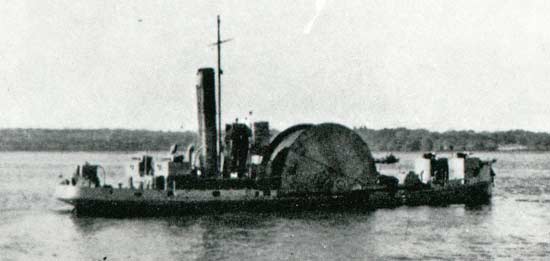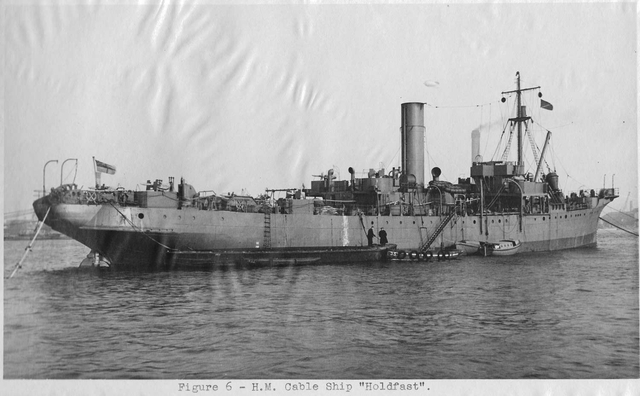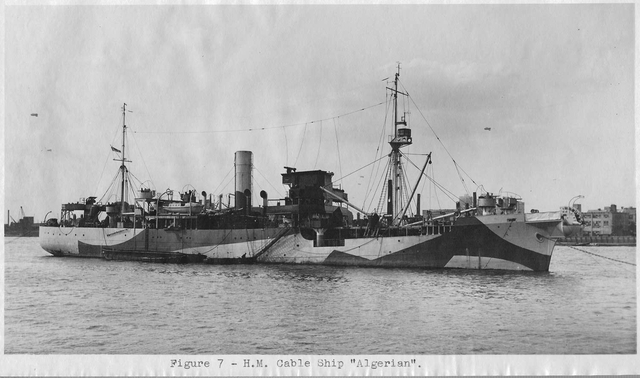
Site of ‘Mulberry’ harbour construction and start of the ‘PLUTO’ fuel pipeline – both vital to the success of the 1944 Normandy landings
Lepe Country Park, Exbury, Southampton
During the build up to D-Day troops and supplies were marshalled along much of the Hampshire coast. Lepe and the surrounding area came under the control of the shore station HMS Mastodon, the headquarters of which were at Exbury House. Many hundreds of troops with their equipment, vehicles and ammunition were hidden along the narrow roads and in the woods of the area.
The site now occupied by the Lepe Country Park was a hive of activity. There was a camp of twenty-one army huts situated in the grassy areas above the cliffs and a construction works camp behind the Mulberry Harbour construction site. The present day Restaurant and Information Centre stand on a site once occupied by a barracks and a cobblers shop, where army boots were mended. After the troops left, the barracks were used as a hospital for the wounded brought back from France. Anti-aircraft guns were positioned on the cliffs above the Restaurant, in front of the Coastguard cottages and in other locations. On a number of occasions the guns were fired at enemy aircraft and at V1 flying bombs - the infamous “Doodlebugs”.
Troops and vehicles left from Lepe. Vehicles were loaded onto ships after being driven onto temporary wharves leading to pier heads. The four-legged metal structures that you can see today, were code named “Dolphins”. They were part of the pier heads and were used as mooring points for ships and landing craft. Tanks and other heavy vehicles were loaded directly from the beach after concrete beach hardening mats had been placed over the foreshore to stop them sinking into the shingle.
The troops that left that day had spent the previous weeks in camps all around the Solent coastline. The roads and woods around the area were crammed with troops, tanks, guns and army vehicles of all kinds. Many of the troops ate, slept and lived in or under their vehicles, only moving when they were sent out on exercises practising for D-Day. It is not known which Regiments left from Lepe, but we do know that men from B Squadron Royal Dragoon Guards, 1st Battalion Hampshire Regiment, HM Royal Marines and Canadian troops including 3rd Canadian Armoured Division were based in the area before they departed for Normandy.
The D-Day invasion would fail if the army was not kept fully supplied. This was likely to be a major problem, as the retreating German army were expected to destroy all suitable harbours. It is not known who first thought of the solution to this problem, but someone suggested that if a harbour could not be found, one would have to be built and then floated across to France. This idea eventually led to the construction of the floating Mulberry Harbours that were towed over to Normandy in June 1944.
It was the enormity of the task that was so staggering. By twenty-one days after D-Day the harbour needed to be capable of handling up to 12,000 tons of stores and 2,500 vehicles each day. That meant that a harbour the size of Dover had to be constructed and floated across the channel!
The floating harbour was to be assembled from a variety of component parts manufactured on the south coast. Several construction sites were chosen. Lepe was one of them, the beach at Stanswood Bay being used in the manufacture of six type B2 Phoenix concrete caissons. These caissons were huge, concrete boxes, 62m (203’6”) long, 13.41m (44’) wide and 10.67m (35’) high, each weighing up to 6,000 tons.
They were divided internally into two rows of eleven compartments, separated by concrete walls 30cm (12”) thick. Building the caissons was a mammoth task that, at Lepe, employed seven hundred men.
The completed caissons were winched along the beach and launched into the sea at high tide. They were then towed away and “parked” along with others made elsewhere, on the seabed at Selsey or Dungeness. When they were needed they were re-floated and towed to Normandy.
A total of 147 Phoenix caissons, of six different types, were towed across the Channel. They were used as the outer wall of a breakwater, composed of sunken ships. This breakwater was of vital importance as it provided the sheltered conditions without which the other units of the harbour could not be assembled and used. The Mulberry Harbours proved very effective. By the end of October 1944 28% of stores, 20% of personnel and 15% of vehicles landing in the British sector had passed through the artificial harbour.
There were several ways in which the allies intended to keep their armies supplied this fuel. One of them was to extend the fuel pipeline network that had been built between 1941 and 1944, across the Channel. The project was code named PLUTO and there were to be two sets of PLUTO pipelines, one running from the Isle of Wight to Cherbourg, code named BAMBI and one running from Dungeness in Kent to Boulogne, code named DUMBO. In order to supply BAMBI, a series of pipelines were laid from Lepe Beach to Thorness Bay near Cowes on the Isle of Wight. From there a pipeline was laid across the island to transport fuel to Shanklin from whence it could be pumped under the Channel via BAMBI.
Due to the huge engineering challenges involved in running seventy mile long pipelines under the Channel, BAMBI was not as successful as hoped. However, the much shorter DUMBO pipelines were more effective and in all PLUTO carried 173 million gallons of fuel of fuel across the channel. Pipelines were also laid in France eventually reaching as far as the German border such that fuel was transported by pipeline all the way from the Mersey to Germany.
It was determined that the cable could be laid across the Channel using cable-laying ships and converted cargo ships which would pay out the line as they traveled the distance between France and England.

Pipelines to the Isle of Wight were laid by HMS Persephone - a converted barge Length 200.0 ft Breadth 35.0 ft Depth 21.1 ft Gross tonnage 2988

HMCS Holdfast
1942:
"The Admiralty and the Ministry of War Transport made available the S.S. London, a coaster of 1,500 tons. She was fitted out to lay the H.A.I.S. Cable and re-named H.M.S. Holdfast under the direction of the Director of Naval Construction. She was equipped with Johnson & Phillips' cable gear, lent by the Post Office, and fitted with large cable tanks and specialist bow and stern sheaves."

HMCS Algerian
1943:
"The Isle of Wight to Cherbourg crossing involved a sea crossing of about 70nm (130km), instead of the 26nm (48.4km) originally visualised. This made necessary the provision of larger cableships and the use of the Conun that would be loaded till the axles were awash. Following a successful trial lay of the 3” H.A.I.S. Cable, Operation PLUTO obtained three more ships to be converted and fitted with cable gear by the Director of Naval Construction. HMS Algerian was to carry 30nm (56.7km) of 3” cable, and the other two, HMS Latimer and HMS Sancroft, where to carry 100nm (185km) of 3” cable, weighing about 6,400 tons."
The ends of the lines were marked by buoys at a point where the shallow water depth prohibited the larger ship from continuing. Smaller ships or barges connected shore end cable at low tide and continued the line to land at high tide.
The first successful HAIS cable was laid on September 22, 1944, between Sandown on the Isle of Wight and Cherbourg, France after an unsuccessful line was laid on August 10. It took approximately 10 hours to lay this 70 mile line. When Boulogne fell to the Allies on September 25, 1944, HAIS cable was laid the 31 miles2 across the Strait of Dover, to Boulogne, France.
This entry based on the Hampshire County Council's web site, with thanks.
PLUTO description from Tim Whittle, with thanks.
At the mouth of the Beaulieu River, Lepe Beach is accessed by road.
Take the A326 South to Blackfield village, follow Lepe Road to the beach.
Also accessible from Beaulieu via Summer Lane - pass through Exbury to the beach.
The Beach Bus calls during the summer - it runs from Hythe to Lymington.
Knight, Bob; Smith, Harry; Barnett, Barry (1998). Pluto – World War II's Best-Kept Secret. Bexley Council's Local Studies Centre et al
"D-Day at Lepe" - Pamphlet. Hampshire County Council